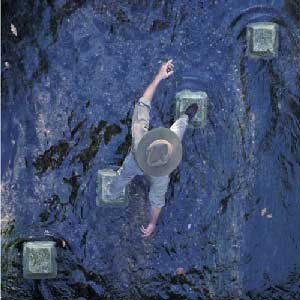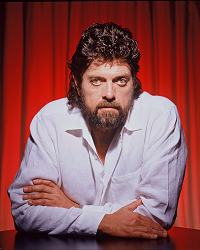CD Review
 Alan Parsons "A Valid Path" (incl. David Gilmour) Alan Parsons "A Valid Path" (incl. David Gilmour)
Released in the US by Artemis, August 2004.
Alan Parsons has had a long and
fruitful association with Pink Floyd, having been one of the key people
behind Dark Side of The Moon, amongst other projects. He is now
releasing his latest album, soon to be a surround sound DVD-A on 5.1
Entertainment, and has managed to persuade David Gilmour to lend his
talents to the album.
Certainly
a mixed bag, there will be songs that Gilmour fans with heartily enjoy,
rubbing shoulders with tracks that will possbily do nothing for them.
However, the wide range of styles that Parsons employs on "A Valid
Path" shoud make it palletable, at the very least in places, for most
listeners. And we know that there are a number of Floyd fans who are
also big Parsons fans, so the work of DG will make a good album even
better for these people. If electronica is not your thing, though, you
would be wise to approach with a a certain amount of caution...
The album kicks off well, with
Return To Tunguska, and David Gilmour's guest appearance. Tunguska, in
Russia, was the site of the 20th Century's most devastating cosmic
impact, with the impact force of 1000 Hiroshima bombs falling via a
comet or meteor (no-one is sure) on 30th June 1908. For me, the track
is the highlight of the album, irrespective of David's involvement. It
is the longest track on the album, an instrumental with a heavy Eastern
influence, featuring a signature Gilmour solo. Lots of soaring notes,
akin to some of the slide stuff in One Of These Days or the final parts
of Shine On You Crazy Diamond, in places.
More Lost Without You follows,
and features PJ Olsson on vocals. This is fairly jaunty, although, as
the title implies, it is a song about lost love. A good, curiously
toe-tapping, singalong tune! Mammagamma 04 is no relation to the
Floyd's 1969 album Ummagumma; it is a slab of pacey instrumental
electronica, quite interesting but there's a feeling from this listener
that the song ultimately doesn't go anywhere - and it takes a while to
bumble along to this lack of destination.
 |
Alan Parsons
© Ed Colver |
A
striking resemblence to some of Richard Wright's work on Broken China
follows on We Play The Game, with The Crystal Method. Certainly
enjoyable, it typifies the wide range of styles on the album. Tijuaniac
is a slower, more thoughtful, yet rambling in places, instrumental.
Dripping water as very effective percussion, very Floydian, leads to
L'Arc En Ciel for this song with overtones of Tangerine Dream, mid-80s,
and early 90s Jean-Michel Jarre. The song includes a guitar solo that
is quite Gilmouresque (if a little faster than David's conventional
style of playing).
A Recurring Dream Within A Dream
features lots of heavily treated vocals, set within a pretty dull,
plodding track. In my mind, the weakest and most dispensible track in
the collection. Things pick up a little with You Can Run. The eighties
vibe created by the preceding tracks is continued here, with an
efficient if fairly unmemorable performance.
Finally, Chomolungma, and a
marked improvement. Quite a powerful instrumental, and again an Eastern
influence is clear to hear. A good end to the album, although the
playout dialogue from John Cleese seems a bit odd, and almost seems to
be making fun of Parson's aural meanderings. As mentioned at the
opening, the album is a real curate's egg; the inclusion of David
Gilmour will, however, encourage some to try out the former Floyd
engineer's latest album...
|
 Articles
Articles  Albums
Albums  Alan Parsons - A Valid Path (with David Gilmour)
Alan Parsons - A Valid Path (with David Gilmour)








 Alan Parsons "A Valid Path" (incl. David Gilmour)
Alan Parsons "A Valid Path" (incl. David Gilmour)




